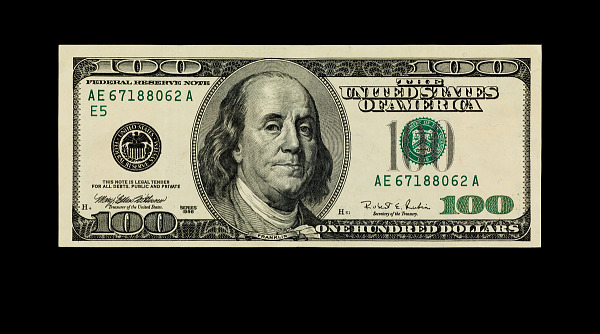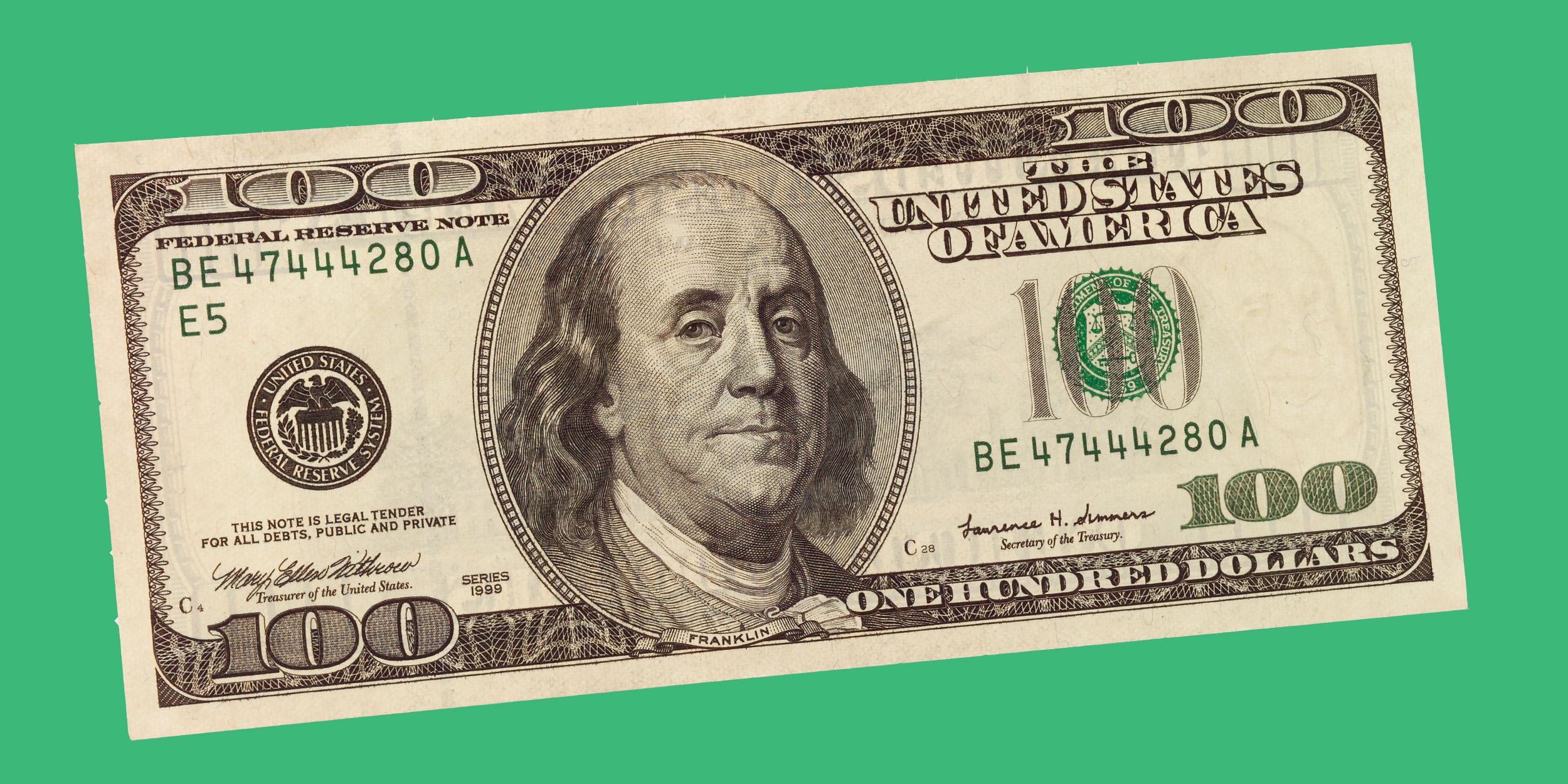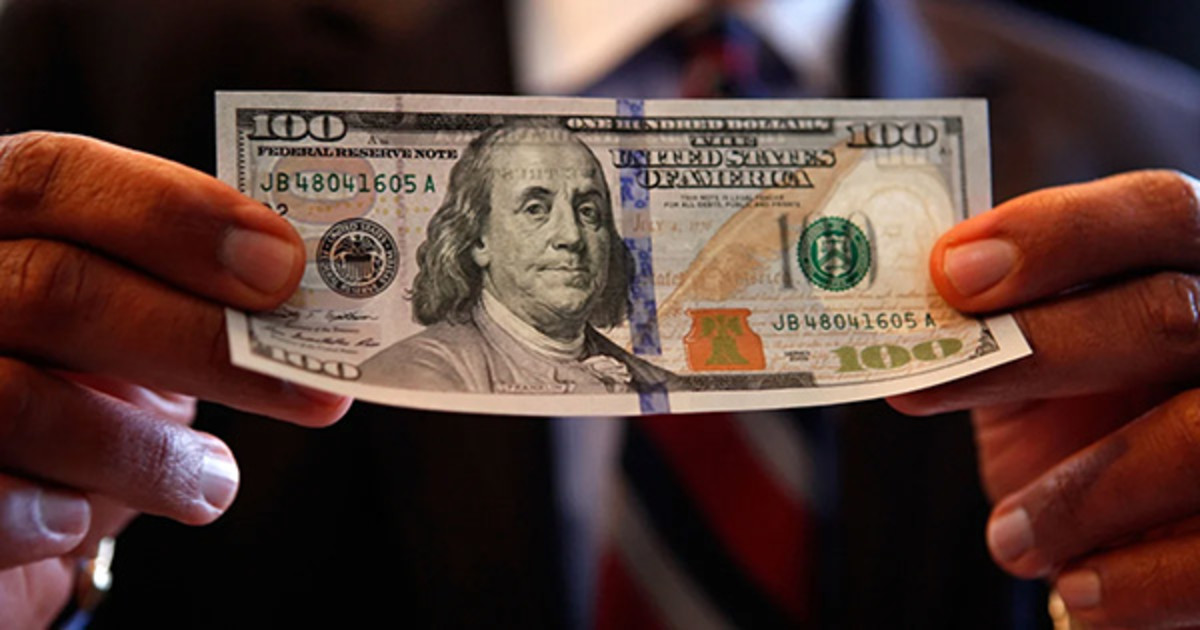The 100-dollar bill, often referred to as the Benjamin, is one of the most iconic and widely recognized currencies in the world. The face on the $100 bill has a rich historical background, with the person depicted on this currency playing an integral role in shaping the United States. The answer to the question “who is on the 100 dollar bill?” is none other than Benjamin Franklin, one of the Founding Fathers of the United States.
Benjamin Franklin: A Life Of Achievement
Benjamin Franklin, born in 1706 in Boston, Massachusetts, was a true polymath. His diverse contributions to science, politics, and society laid the groundwork for many of the ideals that have shaped the American identity. Franklin’s face has adorned the one hundred dollar bill since 1914, and his life’s achievements were recognized as deeply representative of the values associated with the United States.

Franklin’s legacy is not merely defined by his accomplishments as a statesman but also by his invention, curiosity, and ability to think outside the box. From his early career as a printer’s apprentice to becoming one of the most influential figures in U.S. history, Franklin’s story resonates as a prime example of the American Dream.
The Importance Of Benjamin Franklin On The $100 Bill
Why, then, was Benjamin Franklin chosen for this prestigious honor? Unlike many U.S. currency notes, which typically feature the portraits of U.S. Presidents, Franklin’s portrait graces the $100 bill, despite him never holding the office of President.
Instead, Franklin was selected due to his monumental contributions to the country. He was a Founding Father, a signer of the Declaration of Independence, and the first U.S. Ambassador to France.
His diplomatic efforts were critical during the American Revolution, securing vital support from France.
His work in politics, however, was just one facet of his broad interests. Franklin was also an inventor, a philosopher, and a scientist.
His most famous contributions include the invention of bifocal glasses, the lightning rod, and his pioneering work in understanding electricity.
His work ethic, resourcefulness, and ingenuity are qualities that mirror the ideals embodied by the United States. As a result, Benjamin Franklin’s face on the $100 bill has become an enduring symbol of American ingenuity and perseverance.
The Evolution Of The 100 Dollar Bill
Although Benjamin Franklin’s image has remained a constant feature on the $100 bill for over a century, the design of the bill has undergone significant changes over time. Each change reflects both the evolving security features of U.S. currency and the desire to preserve the historical and cultural significance of the notes.

The first iteration of the $100 bill featuring Franklin’s portrait was released in 1914. This design was part of the larger series of Federal Reserve Notes, which were designed to be more uniform and secure.
Initially, Franklin’s image was presented in a profile view. The reverse side of the bill depicted allegorical representations of peace, commerce, liberty, and plenty.
In 1928, the design of the $100 bill was updated to feature Franklin facing forward. The reverse side of the bill also saw changes, including the depiction of Independence Hall, an important site in American history.
These changes marked the beginning of what is now known as the “small size” bills, measuring smaller than their predecessors, which were issued until 1995.
The most recent redesign came in 2013, after a series of delays. The new design introduced a host of security features, including a 3D security ribbon and a color-changing ink feature on the bill.
The updated $100 bill also saw a dramatic shift in its visual appeal with a teal background, a larger portrait of Franklin, and additional security enhancements to combat counterfeiting.
The note’s innovative design continues to make the Benjamin Franklin $100 bill one of the most secure and difficult-to-counterfeit currencies in the world.
Benjamin Franklin: The Only Non-President On U.S. Currency
Franklin’s presence on the $100 bill places him in a unique position in U.S. currency history. While most other denominations of U.S. paper money feature portraits of U.S. Presidents, Franklin is the exception. His prominence is a testament to his lasting influence and his role in shaping the nation’s political, scientific, and philosophical foundations.
In fact, Benjamin Franklin is one of just a few non-presidents to appear on U.S. currency. Alexander Hamilton, the first U.S. Secretary of the Treasury, appears on the $10 bill.
These two individuals stand out as historical figures whose contributions to the creation of the nation were so profound that they warranted recognition on paper money despite never having held the presidency.
The Role Of The Secretary Of The Treasury in Currency Design
The decision of who is featured on U.S. paper money is not arbitrary. The final authority on which historical figure is depicted belongs to the Secretary of the Treasury. The Treasury Department’s selection process aims to honor individuals whose contributions to American history have been both significant and enduring.
In selecting figures for U.S. currency, the Department of the Treasury follows federal laws that prohibit the depiction of living individuals. The primary criteria include the historical importance of the individual and their relevance to the values of the country.
The Worth Of The $100 Bill
The $100 bill holds significant value not only as currency but also as a symbol of financial success. Known colloquially as the “Benjamin” because of Franklin’s image, this bill represents a higher denomination in the U.S. currency system.
While the value of the $100 bill has fluctuated with inflation over time, it continues to hold considerable purchasing power today.
However, the worth of the $100 bill is not solely determined by its face value. The bill’s historical significance, rarity in certain series, and errors in printing can also impact its collector value.
For example, certain older versions of the $100 bill, particularly those from earlier series or bills that were misprinted, can fetch far more than their nominal value in auctions or among collectors.
The $100 Bill As A Collector’s Item
In addition to being widely used in day-to-day transactions, the $100 bill is also a popular item for collectors. Various series of the one hundred dollar bill, such as the 1928 small-sized notes or the 1969 series, can be highly sought after by enthusiasts.
These bills, especially those in mint condition, are often sold for amounts significantly higher than their face value.
Errors in printing, such as misaligned printing or unusual serial numbers, can also contribute to a bill’s collectible value. These errors are rare, making bills with printing mistakes highly coveted in the collector market.
Conclusion
The answer to the question “who is on the 100 dollar bill?” is none other than Benjamin Franklin. Franklin’s role in shaping the United States and his embodiment of American values like ingenuity, perseverance, and hard work make him the perfect figure to represent the $100 bill.
Since its first introduction in 1914, the one hundred dollar bill has evolved, incorporating enhanced security features and new designs while retaining Franklin’s portrait as a symbol of the nation’s ideals.
The $100 bill remains an iconic part of U.S. currency, serving both as a practical medium for transactions and as a collector’s item for those fascinated by the rich history it carries.

